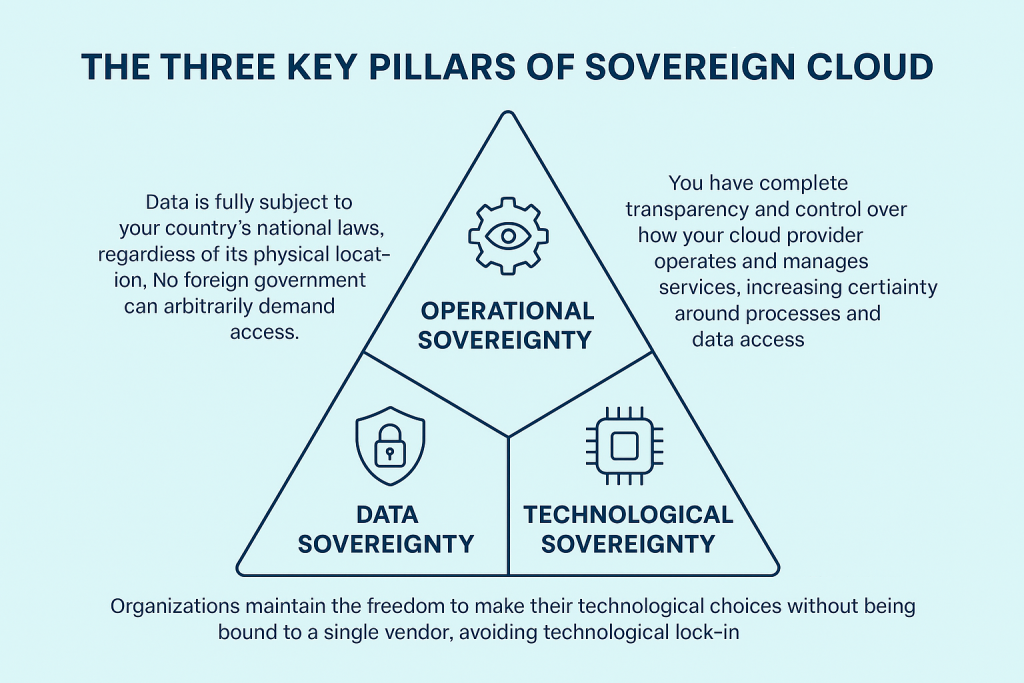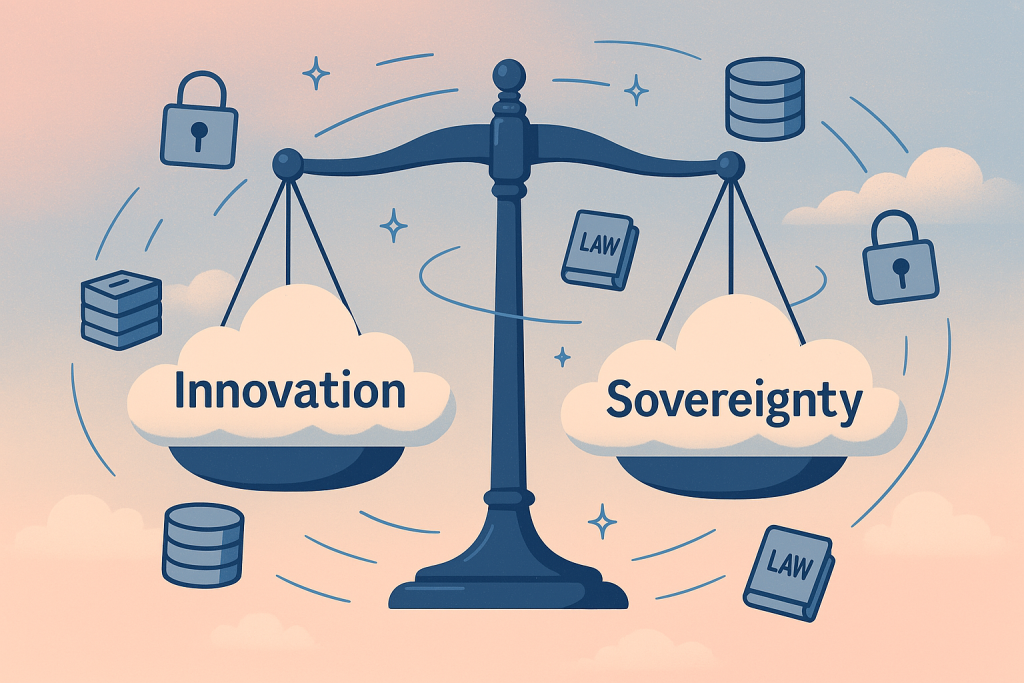When I recently encountered the term “Sovereign Cloud” again, I wondered exactly what it entails. Sovereign Cloud is increasingly discussed in the context of growing dependence on major cloud providers like Microsoft, Google, and AWS. But why has this concept become more relevant than ever, and what does it specifically mean for your organization?
We are living in an era where digital services have become critical to the operation of nearly every organization. With this growing reliance comes increasing concern about maintaining control over data and processes. Gartner reports that organizations are becoming more aware of their reliance on international providers, leading to stricter regulations concerning data residency, governance, and technological autonomy. Sovereign Cloud offers solutions to these challenges.
What Exactly Is Sovereign Cloud?
A Sovereign Cloud provides cloud solutions specifically designed to comply with local laws and regulations, ensuring maximum operational and technological independence for organizations. Gartner describes Sovereign Cloud as cloud services delivered entirely within a single jurisdiction, ensuring data residency and operational autonomy. This prevents unwanted interference from other jurisdictions or foreign governments.
A significant difference from traditional cloud solutions is that Sovereign Clouds often have unique governance structures, with local entities playing a central role in management and oversight. This enhances transparency, trust, and control.
The Three Key Pillars of Sovereign Cloud
Every effective Sovereign Cloud strategy is built upon three essential pillars identified by Gartner:
- Data Sovereignty: Data is fully subject to your country’s national laws, regardless of its physical location. No foreign government can arbitrarily demand access.
- Operational Sovereignty: You have complete transparency and control over how your cloud provider operates and manages services, increasing certainty around processes and data access.
- Technological Sovereignty: Organizations maintain the freedom to make their technological choices without being bound to a single vendor, avoiding technological lock-in.

Why Is Cloud Sovereignty Crucial Now?
Enhanced Security and Data Protection
Recent incidents, including significant data breaches at international providers, highlight the need for increased control and transparency. Gartner indicates that regulated sectors and critical infrastructure increasingly opt for Sovereign Cloud solutions due to the heightened security and reliability provided by local cloud infrastructure and management.
Compliance with Stricter Regulations
New European regulations such as the EU Data Act (effective September 2025) and intensified GDPR, NIS2, and DORA requirements make data sovereignty essential. A Sovereign Cloud simplifies compliance by keeping data within national or European borders, mitigating risks of hefty fines and reputational damage.
Reducing Dependence on Hyperscalers
Choosing Sovereign Cloud strategically reduces dependence on major international hyperscalers. Gartner notes growing importance placed on local and regional digital sovereignty. By reducing reliance, your organization gains flexibility, avoids risks like vendor lock-in, and enhances your negotiating power.
Cost Management with Sovereign Cloud
Using a Sovereign Cloud doesn’t have to mean increased costs. On the contrary, smart strategies can lead to significant savings:
- Strategic Workload Placement: Place sensitive or compliance-related workloads locally to avoid unexpected compliance costs.
- Hybrid Solutions: Combine hyperscaler public cloud services with local sovereign cloud solutions to optimize costs and reduce risks.
- Effective Governance Management: Employ specific tools and frameworks to manage and monitor cloud costs proactively, avoiding surprises.
Developing a Successful Sovereign Cloud Strategy
An effective strategy requires careful planning:
- Develop a Clear Exit Strategy: Start with the end in mind. Ensure flexibility and prepare your organization for future changes in regulations or technological needs. Gartner emphasizes regular discussions with cloud providers about workload portability and preventing vendor lock-in through a multicloud approach.
- Identify Compliance Requirements and Risks: Clearly map out data and processes that require stringent compliance.
- Analyze Local Cloud Providers: Examine providers such as Cegeka, OVHcloud, or recent initiatives like Broadcom’s European Sovereign Cloud. Look out for certifications such as the European Cloud Security Certification (EUCS).
- Develop a Hybrid Strategy: Integrate hyperscale and local cloud solutions to achieve compliance, cost-efficiency, and operational effectiveness.
- Implement Robust Governance Processes: Utilize standardized tools and frameworks to maintain consistent management and compliance across various cloud platforms.
Recent Developments (2024-2025)
Several recent trends underline the importance of a robust Sovereign Cloud strategy:
- EU Data Act: From September 2025, cloud providers must facilitate easier cloud migrations, strengthening autonomy.
- Microsoft’s EU Data Boundary: Since February 2025, Microsoft provides complete data residency within the EU, simplifying compliance.
- European Cloud Security Certification (EUCS): Expected in 2025, this certification helps organizations select reliable and secure cloud providers.
- Dutch Initiatives: A recent whitepaper by the Dutch Cloud Community emphasizes the importance of local cloud initiatives for digital sovereignty.
Sovereign Cloud as a Strategic Advantage
A well-developed Sovereign Cloud strategy not only ensures compliance and security but also creates competitive advantages. Gartner highlights that investing in Sovereign Cloud enhances an organization’s reputation and customer trust. Privacy guarantees and data control increasingly influence decisions by customers and stakeholders.
Time to Take Action
Digital sovereignty is no longer optional but strategically necessary. Now is the time to ask yourself:
- Which data and processes must remain local?
- How can my organization benefit from operational and technological autonomy?
- How do I maintain flexibility and compliance amidst changing regulations?

Taking action now establishes the foundation for a future-proof and autonomous cloud strategy.
Are you ready to elevate your organization’s digital autonomy? The future of your organization depends on it. If you’d like to discuss this further, please feel free to contact me or Hanin el Farissi.

